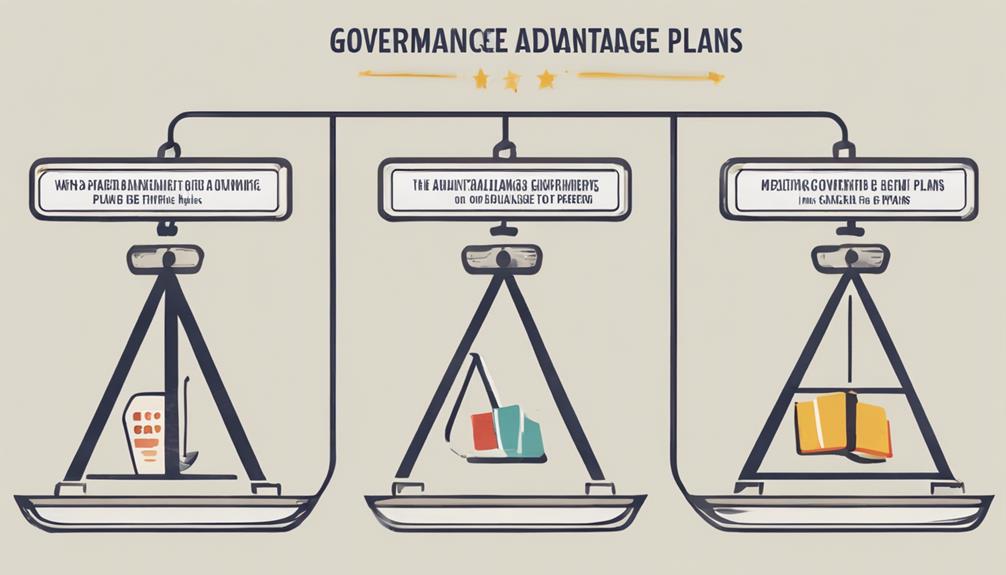When delving into the complex landscape of retirement planning, it is important to grasp the changes in income sources and investment strategies. How can we guarantee financial stability in our retirement years?
Exploring the nuances of Social Security, healthcare provisions, and personalized financial blueprints are just the beginning. Join us in uncovering the indispensable strategies that pave the way for a stable and fulfilling retirement in the ever-evolving landscape of financial security.
Key Takeaways
- Shift to defined contribution plans for retirement savings growth
- Maximize retirement account contributions for compound growth
- Delay Social Security benefits for increased monthly payments
- Plan ahead for rising healthcare costs with long-term care coverage
Income Stability and Retirement Landscape Changes
Navigating the shifting retirement landscape from defined benefit plans to defined contribution plans requires a strategic approach to ensure income stability for future retirees. With the evolving retirement landscape, individuals must engage in proactive financial planning to mitigate income challenges in their retirement years. The transition to defined contribution plans places the responsibility of retirement income on individuals, necessitating a comprehensive understanding of investment strategies and the impact of taxes on retirement funds.
The SECURE Act has introduced changes that impact retirement planning, emphasizing the importance of considering healthcare costs and demographic trends in financial strategies. Rising healthcare expenses and shifting demographic patterns underscore the need for meticulous financial planning to safeguard retirement income. Implementing diverse investment strategies tailored to individual risk tolerance levels can help build a robust financial foundation for retirement. By addressing income stability concerns early on and staying informed about financial trends, individuals can navigate the changing retirement landscape with confidence and resilience.
Retirement Account Options and Strategies

Retirement account options and strategies encompass a range of financial vehicles that offer tax advantages and investment diversification opportunities for individuals planning for their post-career years. When considering retirement savings, it's crucial to understand the various options available and how to optimize them for long-term financial security.
- Diverse Options: Retirement accounts like 401(k)s, IRAs, Roth IRAs, and SEP-IRAs provide tax benefits and investment choices.
- Maximizing Contributions: Contributing the maximum allowable amounts to retirement accounts can harness compound growth, enhancing savings.
- Employer Contributions: Taking advantage of employer matching contributions in 401(k) plans can significantly augment retirement savings over time.
- Strategic Conversions: Roth IRA conversions allow individuals to transfer funds from traditional accounts, potentially lowering future tax burdens.
Maximizing Social Security Benefits
To maximize Social Security benefits as part of comprehensive retirement planning strategies, we must strategically consider several key factors.
Understanding our full retirement age is crucial, as it affects the amount we receive each month. By delaying benefits beyond this age, we can significantly boost our monthly benefits by up to 8% per year until we reach 70. Conversely, claiming early at 62 can reduce our benefits by as much as 30% compared to claiming at full retirement age.
Spousal benefits also play a vital role, allowing married individuals to potentially claim up to 50% of their spouse's benefit amount. It's essential to note that Social Security benefits are calculated based on the highest 35 years of indexed earnings, adjusted for inflation.
Additionally, the full retirement age varies by birth year, with the current range set at 66 to 67 for most individuals. By understanding these nuances and incorporating them into our retirement planning strategies, we can maximize our Social Security benefits for a more secure financial future.
Personal Financial Planning Essentials

How can we ensure our financial stability in retirement through effective personal financial planning strategies? Personal financial planning is essential in today's retirement landscape, where individuals bear more responsibility for their financial security. To navigate this terrain successfully, we must consider key aspects of personal financial planning:
- Maximize Contributions to Retirement Accounts: Understanding and optimizing contributions to retirement vehicles like 401(k)s and IRAs are critical for building a robust retirement income.
- Diversify Investment Options: Exploring various investment opportunities and risks is vital to grow retirement savings and secure financial stability in retirement.
- Plan for Healthcare Needs: Considering longer lifespans and potential healthcare expenses, including long-term care insurance, is crucial for comprehensive personal financial planning.
- Ensure Financial Security: Effective financial planning plays a pivotal role in securing retirement income and maintaining financial stability as we transition into retirement amidst evolving financial landscapes.
Healthcare Considerations in Retirement
Navigating the landscape of personal financial planning essentials, one critical aspect that demands strategic consideration is the realm of healthcare considerations in retirement. As retirees plan for their future, understanding the impact of healthcare costs is crucial for maintaining financial security. Long-term care insurance plays a significant role in preparing for potential healthcare needs, especially considering the shortage of direct care workers. Demographic disparities can affect the quality and accessibility of healthcare services, highlighting the importance of comprehensive retirement planning.
| Healthcare Considerations in Retirement | |
|---|---|
| Key Considerations | Impact |
| Rising healthcare costs | Financial strain |
| Shortage of direct care workers | Assistance challenges |
| Planning for future healthcare needs | Long-term care coverage |
| Demographic disparities | Quality disparities |
| High-deductible plans | Cost-sharing dynamics |
Understanding these factors is essential for retirees to make informed decisions about their healthcare needs, ensuring a higher quality of life and financial stability throughout retirement.
Frequently Asked Questions
What Is the Best Strategy for Financial Security and Retirement Planning?
When it comes to financial security and retirement planning, our best strategy involves a holistic approach. We need to consider all our income sources, expenses, investments, and risks.
Maximizing contributions to retirement accounts like 401(k)s and IRAs is crucial for building savings. Understanding investment options, asset allocation, and risk tolerance helps us craft a personalized retirement investment plan.
Planning for longer lifespans, healthcare costs, effective tax strategies, withdrawals, and estate planning are all key components for ensuring financial security in retirement.
How Can I Be Financially Secure in Retirement?
In retirement, financial security is like a sturdy ship navigating the waves of uncertainty. We must chart a course by establishing a comprehensive plan that includes savings, investments, and Social Security benefits.
Determining income needs based on expenses, healthcare costs, and lifestyle desires is crucial. Exploring tax-efficient strategies and planning for longevity risks are vital.
Seeking guidance from professionals ensures our financial ship stays afloat for the long haul.
What Are the 5 Factors to Consider When Planning for Retirement?
When planning for retirement, we consider five key factors:
- Our current financial situation,
- Retirement goals,
- Inflation and healthcare costs,
- Potential sources of income,
- The impact of taxes.
Assessing savings, investments, and debts is vital. Determining lifestyle preferences helps estimate retirement needs.
Factoring in rising costs ensures savings last. Estimating income from Social Security and pensions aids in financial planning.
Considering tax implications is crucial for effective retirement strategy.
What Are the 7 Steps in Planning Your Retirement?
When planning our retirement, we first establish our goals and income needs. We evaluate our finances, savings, and debts for a clear picture.
Developing a savings strategy, like contributing to 401(k)s, is crucial. Regularly reviewing and adjusting our plan ensures success.
These steps lay the foundation for a secure retirement.
Conclusion
As we navigate the ever-changing landscape of retirement planning in the U.S., one statistic stands out: 40% of Americans aged 55-64 have no retirement savings. This fact highlights the urgent need for proactive financial planning and investment strategies to ensure a secure future.
By understanding the complexities of retirement income, maximizing Social Security benefits, and prioritizing personal financial planning, we can take control of our financial future and achieve lasting security in retirement.









